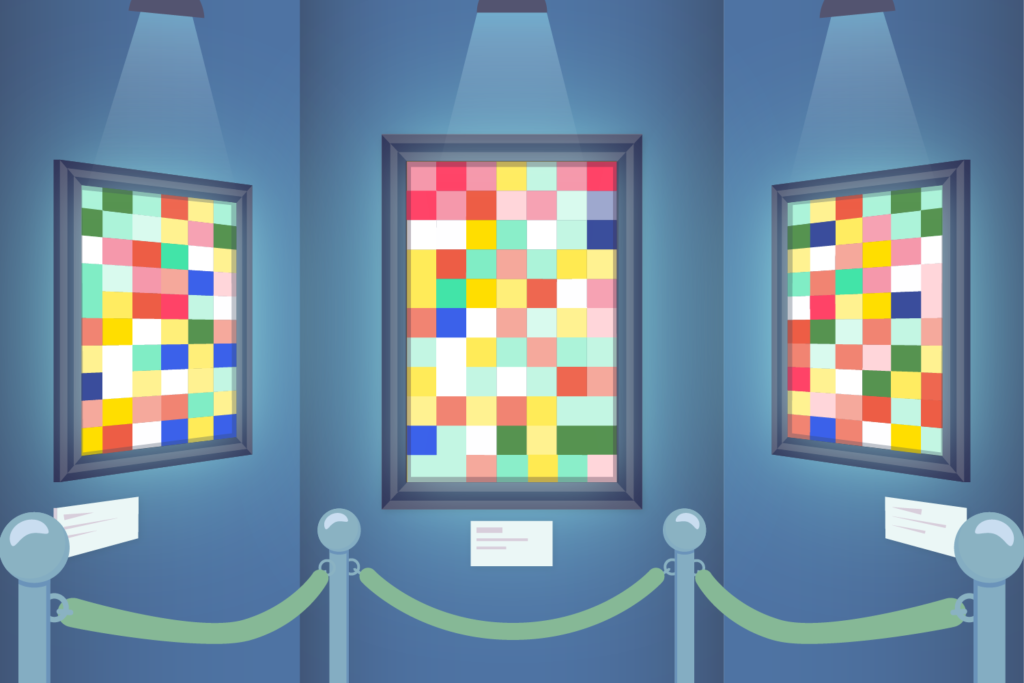HORROR HAS always been queer. Since the genre’s conception, horror characters have long hidden their repressed selves behind the campy make-up of the supernatural. If the idea behind horror is about wanting to look at what you should not see, no one can relate more to the suppression of natural desires than the LGBTQIA+ community. Similar to the monsters in horror stories, queer people have learned to live in the shadowy spaces of society.
The lifting of the Hays Code censorship of homosexuality in the 1960s helped with the community’s visibility in Western media. Nonetheless, it still has taken decades for LGBTQIA+ people, especially people of color, to break free from the closet doors that limit their representation to certain stereotypes. Simultaneously, the shadows of the horror genre have always made queer people shine their brightest regardless of the time period, as it gives them the chance to share the usual cishet lead’s spotlight.
In the shadows
With the Stonewall riots and the abandonment of strict censorship laws in the late 1960s, queer themes and subtexts in media were more permitted during this era than in previous decades.
An integral film that contributed to LGBTQIA+ visibility in media is The Rocky Horror Picture Show (1975). The gender-binary-bending film is commonly described as the campy adaptation of Frankenstein’s monster narrative. It writes its love letter to queer joy with a glitter pen, as it originated the infamous Time Warp song-and-dance sequence, among other notable numbers.
At the time, the film was considered controversial because of its portrayal of androgyny and transness, as well as its exploration of sexuality and fluidity. Conservative viewers often antagonize Dr. Frank-N-Furter’s (Tim Curry) hypersexuality, viewing their gender expression as something comedic. Current audiences, however, now find representation in the film’s overt queerness.
Queer representation in the next decade, nonetheless, eventually toned down due to the public’s stigma surrounding the HIV/AIDS epidemic in the ‘80s. For instance, Neil Jordan’s Interview with the Vampire (1994) depicts such a case, with its portrayal of blood-hungry vampires as a queer allegory.
The gothic vampire film starring Tom Cruise and Brad Pitt relies on queercoding, as compared to the openness of Rocky Horror. It emphasizes the similarities between vampire and queer awakenings through its depiction of sensual blood-sucking. Nevertheless, the mainstream production company that produced it demanded its homoeroticism to be as “strictly implicit” as possible.
These partial restrictions, however, did not stop the LGBTQIA+ community from finding comfort with the little they were given.
Sneaky peeks
Compared to the previous generations, the late ‘90s to the late ‘00s brought out more accepting audiences with the evolving gay rights movement. The queer community, however, still received condemnation from major organized religions as a lasting effect of the stigma around HIV/AIDS. In response to this criticism, the creation of queer-coded films that spotlight the occult—mystifying blood rituals and the spiritual—gained traction because it humanizes what society deems as “the other.”
Andrew Fleming’s The Craft (1996) delves heavily into these themes with its exploration of witchcraft against the film’s Catholic school setting. It follows four misfit girls who take revenge on their oppressors by harnessing black magic, from love spells to murder. While its queerness relies heavily on subtext (e.g. drinking of each other’s blood), its transcendence of the conservative portrayals of womanhood at the time has made it a queer favorite until now.
Conversely, Diablo Cody’s Jennifer’s Body (2009) subverts the previous decade’s conservatism, both in portrayals of violence and sexuality. This is exemplified by the showcase of physical intimacy between Jennifer (Megan Fox) and her best friend, Needy (Amanda Seyfried). In one of the final fight scenes, the titular man-eating character also proclaims to Needy that she “goes both ways.” While some interpret it as Jennifer cannibalizing both men and women, it also becomes a multifaceted explanation of her bisexuality.
Because of the more conservative culture of the 2000s and the film’s misdirected marketing, Jennifer’s Body received flak when it was first released. However, it has then gained a cult following from both inside and outside the community years after, stressing the significance of context behind representation.
Out in the open
At the turn of the current decade, queerness no longer needed to be carefully packaged behind analogies and parallelisms to become palatable for the general audience. What was left to creep in the dark is now in the limelight—central to the plot of modern horror classics.
In Leigh Janiak’s Fear Street trilogy (2021), not only are the lead characters queer, but the narrative itself is propelled by a sapphic relationship. As murders ensue from killers of both present and past, the romance between openly gay Deena (Kiana Madeira) and closeted Sam (Olivia Scott Welch) is tested, but nonetheless, persists through time.
While maintaining its core as a slasher, the films go to great lengths with queerness. It culminates with the third movie’s revelation that the centuries-long misfortunes and hauntings all stem from the ostracization of a sapphic couple. Through these, the trilogy successfully portrays both queer romance and plight.
Another unapologetically queer thriller is Halina Reijn’s Bodies Bodies Bodies (2022), as it even opens with a sapphic makeout scene. It follows a group stuck in a mansion amid a hurricane and a killing spree. In the span of a night, tensions and suspicions over the murderer’s identity are intensified by the queer romance between Sophie (Amandla Stenberg) and Bee (Maria Bakalova) and the complications caused by the involvement of Jordan (Myha’la Herrold).
Highlighting queer characters who feel more fleshed out—with all their complexities, flaws, and humanity, the movie proves that more space now exists for LGBTQIA+ representation. In this era of comparably diverse representation, gay people no longer need to fit certain pre-imposed images for them to exist in media.
Under the Filipino sun
While Western filmmakers have taken huge strides, locating queer sensibilities in the local scene is more complicated. The country’s heavily conservative religious landscape poses additional challenges to the inclusion of queerness in mainstream popular culture. Having to tread lightly, current representations have their own share of shortcomings and continue to adhere to heteronormative standards.
Jade Castro’s Remington and the Curse of the Zombadings (2011) can be considered bold, placing queerness at the forefront by making discrimination and hate crimes vital aspects of the plot. The narrative begins with a young Remington (Martin Escudero) being punished with a curse that will turn him into the very being that he despises: a gay man. Years later, the conflict arises as he loses his masculinity piece by piece and questions his attraction to his male best friend, making him prey to a serial killer who only targets gay people in their locality.
While the film provides insights into the hardships of liberating queer expressions, its one-dimensional portrayal of gayness heavily anchors on the parloristang bakla (gay salon worker) stereotype. Their supposed flamboyance makes them excellent comedic reliefs, and thus becoming “tolerable” for viewers. Queer people, especially gay men, are also generalized to be promiscuous, as reflected by the fixation of media on their sexual acts. This is even made more evident in recent representations on both small and silver screens.
Amid the increasing saturation of local and international cinema with the Boys’ Love (BL) subgenre, Tim Muñoz’s Don Filipo (2021) puts its own spin on BL as a horror film. It follows the bond that develops between Dino (Luis Padilla) and Obet (Drei Arias), two helpers looking after the paralyzed Don Filipo (Steven Yu) during a string of killings in a rural town.
Upon release, however, the film was criticized for its over-sexualization of queerness through unnecessary crotch shots and even frontal nudity. It then sparked the debate on whether explicit gay portrayals merely pander to the fetishization of queer romance instead of actually serving the community.
Both movies, indeed, show a double standard in the portrayal of relationships. Gayness is often depicted as merely rooted in sexual desires while straight love interests get wholesome romantic narratives. Local films now focusing on queer stories is considerably a huge step—but more needs to be done to attain genuine, out-in-the-open representation.
Transforming the closet
Whether in subtext or overt portrayals of romance, queerness has always coexisted with so-called “creatures of the night” in the shadowy closet of horror. The genre has served as an instrument to uncover narratives beyond the realm of what is considered natural. In the process, horror has given the LGBTQIA+ community exposure,significantly contributing to their liberation.
If there is one thing unmasked by these films, it is that no one knows fear and hiding better than queer people. Such an insight proves why it is vital to give them the space for expression in front and behind the camera. Time and time again, bodies may be buried but queerness will never be.
That said, there should not be contentment with having horror as a refuge. The continuous fight for diverse and genuine representation must go beyond the genre. Although locks have loosened, queer creators and actors still have many doors to burst out of just to have a share of the sunlight.





